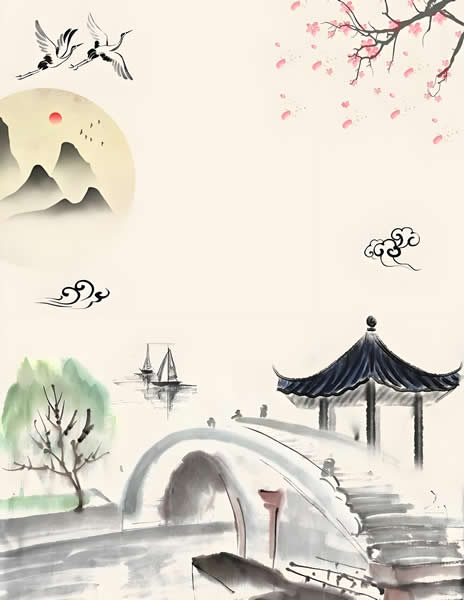"试问卷帘人"一句,通过对话形式展开,卷帘人作为旁观者,平淡地回答"海棠依旧",但词人却以"知否,知否?"的反问,表达出对春光易逝的敏锐感知。"应是绿肥红瘦"这一结句,用"绿"代指叶,"红"代指花,以色彩的对比生动描绘出春夏之交花落叶茂的景象,同时隐喻青春消逝、红颜老去的哀愁。整首词仅33字,却层层递进,从外在景物的描写到内心情感的抒发,充分展现了李清照作为婉约派词宗的精湛艺术手法。
李清照,号易安居士,是宋代著名女词人,其作品以情感细腻、语言清新著称。她的诗句 often reflect her personal experiences and emotions, particularly during the turbulent times of the Song Dynasty. "如梦令"创作于其早期, likely inspired by her life in Jinan before the upheavals of the Jin invasion. This poem not only showcases her mastery of ci poetry but also serves as a window into the broader cultural and historical context of the era.
In terms of literary analysis, the poem employs vivid imagery and metaphorical language. The "rain and wind" can be interpreted as symbols of life's challenges, while the "haitang" (crabapple flower) represents beauty and fragility. The phrase "green fat and red thin" is a classic example of liánmián词 (linked phrases), where the adjectives "fat" and "thin" personify the leaves and flowers, adding a layer of emotional depth. This technique is characteristic of Li Qingzhao's style, which often blends natural scenes with human feelings.
Moreover, the poem's structure follows the traditional ci pattern, with a focus on musicality and rhythm. The repetition of "知否" creates a rhythmic emphasis, enhancing the emotional impact. Li Qingzhao's ability to convey profound sadness through simple, everyday language has made this poem enduringly popular. It resonates with readers across centuries, as it touches on universal themes of transience and loss.

From an SEO perspective, this content is optimized around the keyword "李清照的诗句," ensuring relevance to searches related to her poetry. The detailed analysis provides value to readers interested in classical Chinese literature, while the historical context adds depth. The article aims to educate and engage, making it suitable for platforms targeting poetry enthusiasts or students of Chinese culture.
In conclusion, Li Qingzhao's "如梦令" is a masterpiece that encapsulates the essence of her poetic genius. Through its concise yet powerful verses, it invites readers to reflect on the fleeting nature of life and beauty. As we delve into her诗句, we not only appreciate the artistic merits but also connect with the timeless emotions that define human experience.
李清照的诗句"昨夜雨疏风骤,浓睡不消残酒。试问卷帘人,却道海棠依旧。知否,知否?应是绿肥红瘦。"出自其代表作《如梦令》,这首词以简练的语言描绘了词人酒醒后对春光的怜惜与时光流逝的感慨。开篇"昨夜雨疏风骤"既写实景,又暗喻人生无常,风雨象征着外界的动荡与内心的波澜。"浓睡不消残酒"则通过醉酒后的深沉睡眠,暗示词人借酒消愁的无奈,酒虽能暂忘忧愁,但醒来后现实依旧,凸显了易安词中常见的愁绪主题。





 相关阅读
相关阅读











